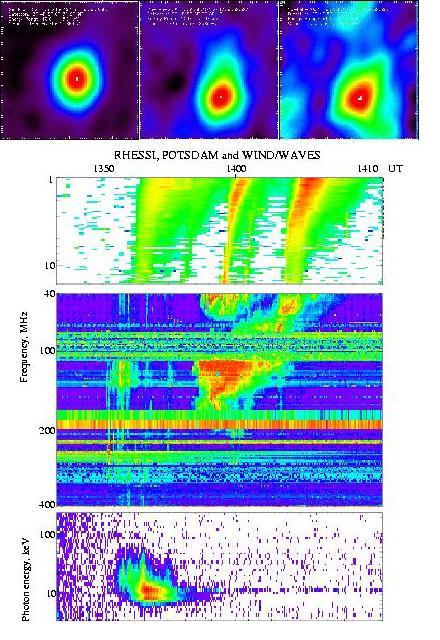AIP astronomy picture of the month
(previous pictures of the month)
First Data of the RHESSI-AIP collaboration
(Credit: Solar Radioastronomy Group, AIP)


As one of the first results of the collaboration between solar radioastronomy group of the AIP and the RHESSI team at the Space Science Laboratory (Berkeley, USA) we present X-ray images and associated dynamic radio spectra of a solar flare on 26 February 2002. The X-ray images were obtained with the Ramaty High-Energy Solar Spectroscopic Imager (RHESSI)/NASA (by courtesy of R. P. Lin (PI of RHESSI)). The X-ray images (top) show hard X-ray sources of the flare at 13:53 UT at three different energy bands: 10-15, 20-30, and 30-50 keV. The images size is about 65" times 65".
The low pannels represent the dynamic radio spectrum (1-14 MHz) of the WAVES instrument (by courtesy of M. Kaiser (NASA/GSFC)) aboard the Wind spacecraft (top) and that of the radio spectralpolarimeter (40-800 MHz) of the AIP (middle) for this solar event as well as the dynamic hard X-ray spectrum (bottom) simultaneously measured by the RHESSI spacecraft.
All these data show that a strong hard X-ray emission in the range 8-100 keV occured during the flare (bottom panel) indicating the generation of highly energetic electrons in the corona of the Sun. That is associated with fast drifting stripes (type III bursts) and later (about 13:57 UT) with slow drifting stripes (type II burst) in the dynamic radio spectra (top and middle). Type III and type II bursts represent radio emission from electron beams and from shock wave in solar corona, repectively.